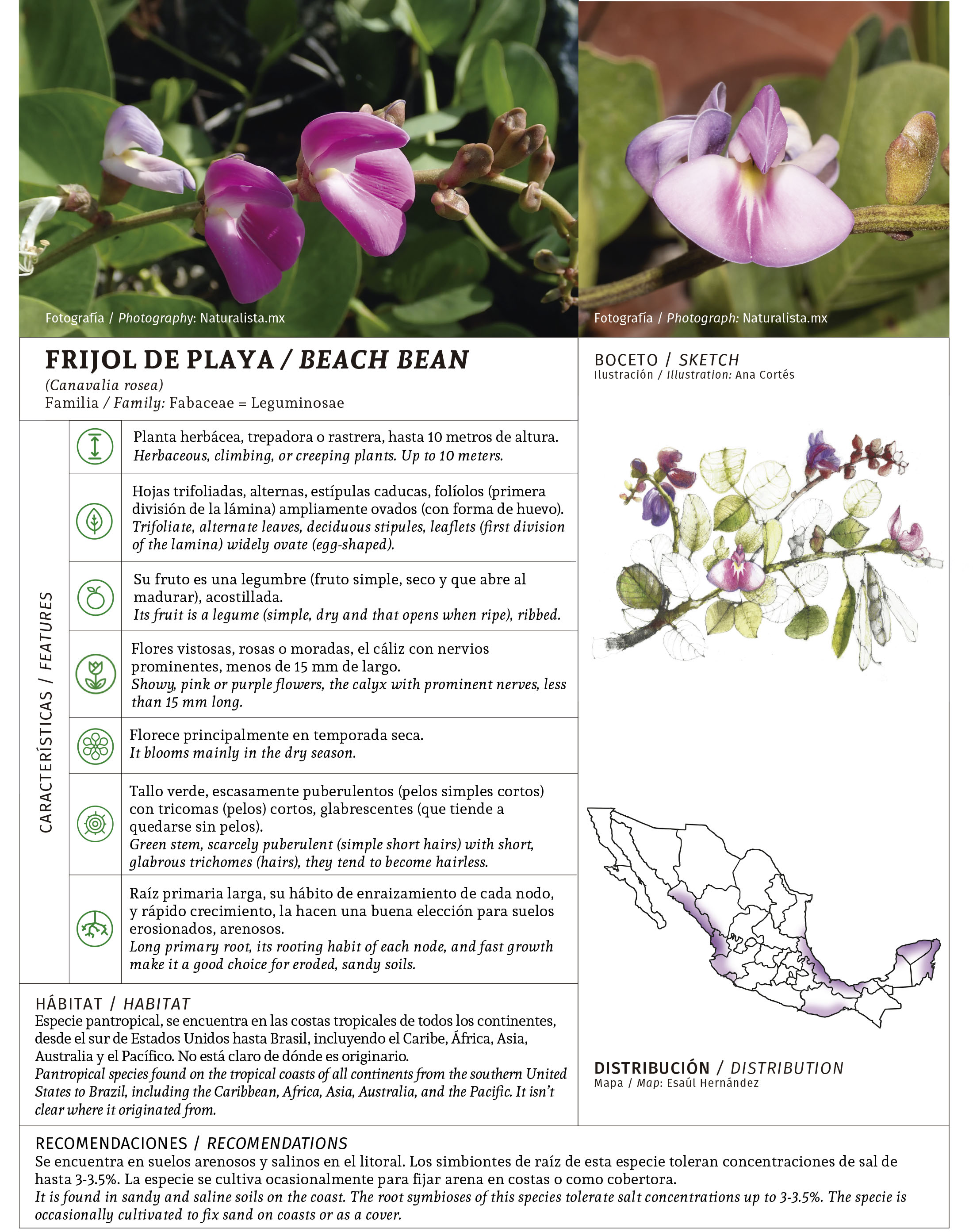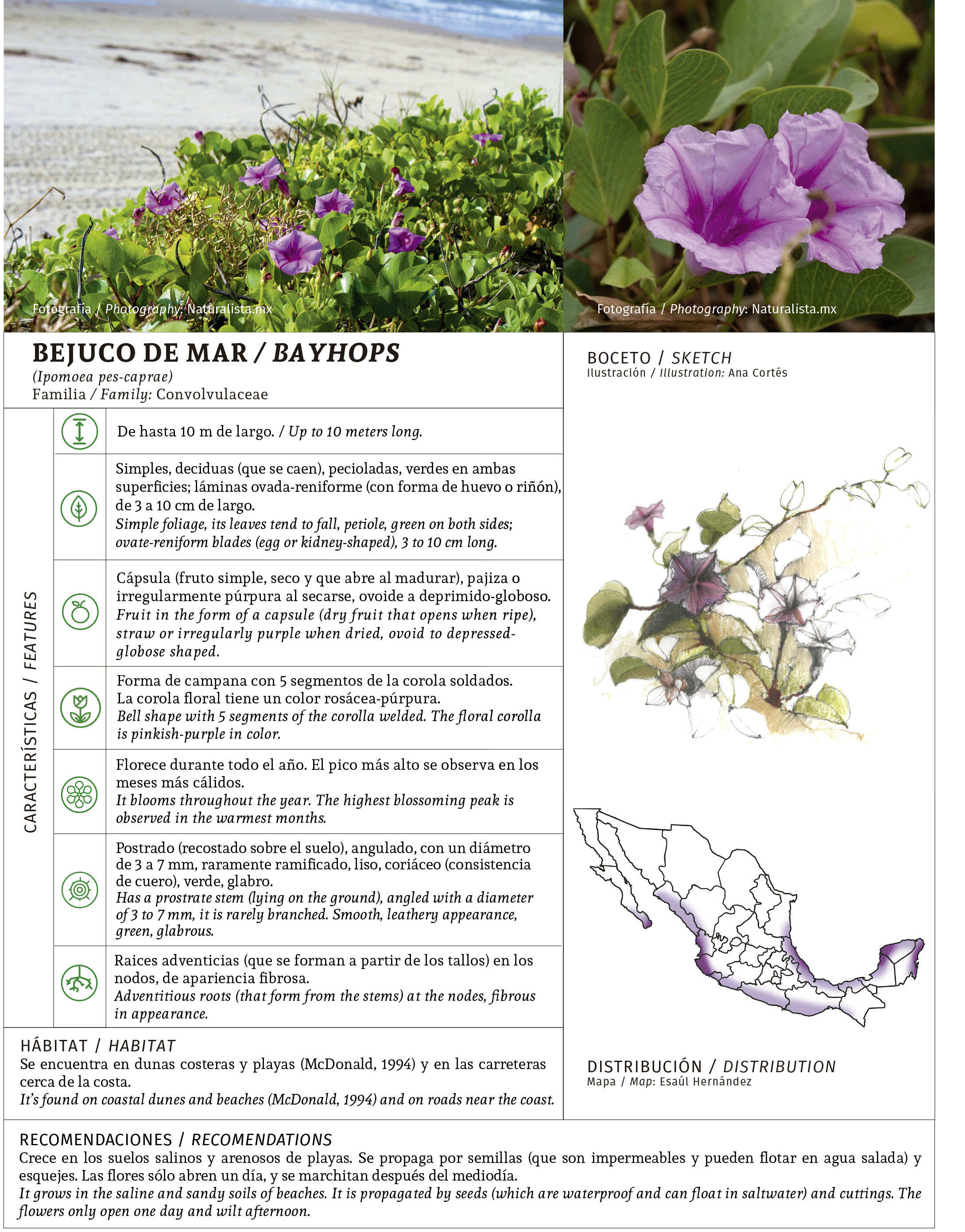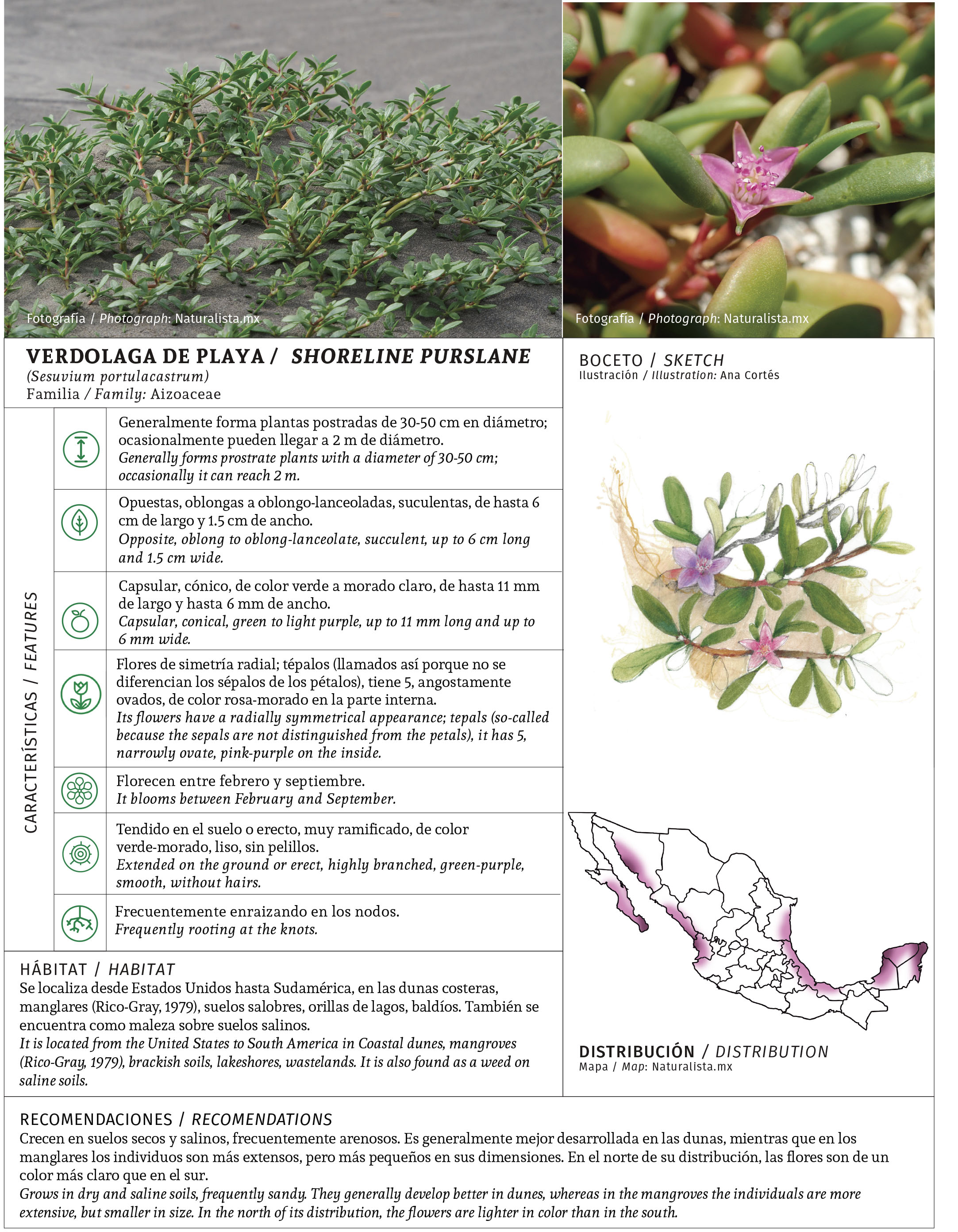Pioneer Sand Dunes Plants
The vegetation of the coastal dunes is considered halophilic, since it is a vegetation developed in soils with a high content of soluble salts. A relevant aspect of this type of plant community, is the environmental services it provides to society. The most important is its function as a protection barrier against the harmful action of wind and tides.
The coastal vegetation intercepts the movement of the wind and the sand, for which it fixes the dune allowing the accumulation of organic matter andtherefore, the formation of the soil.











